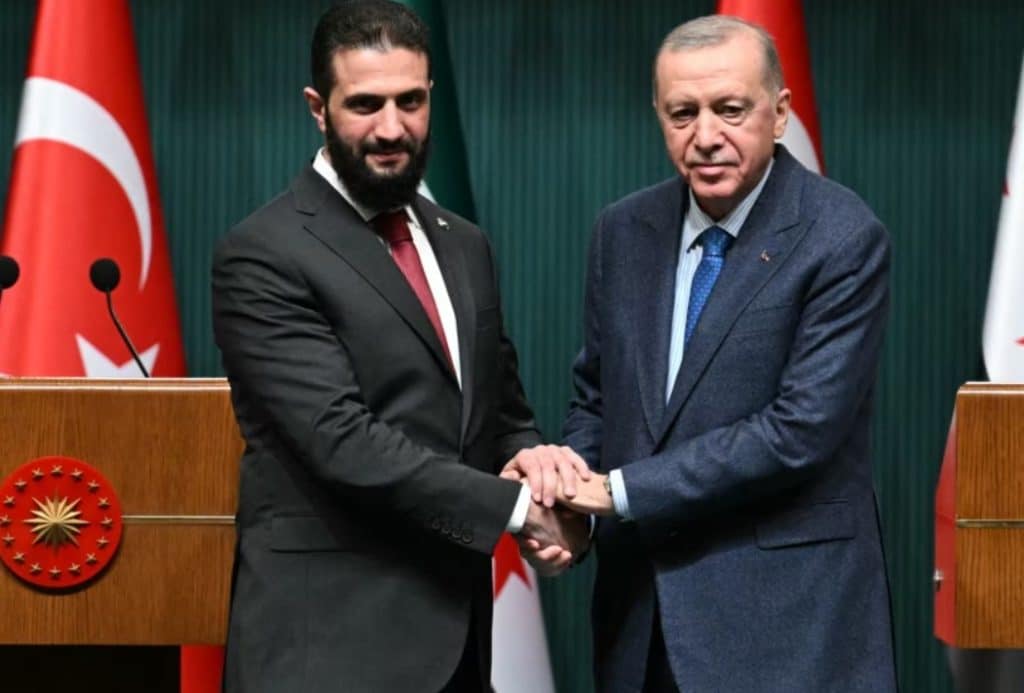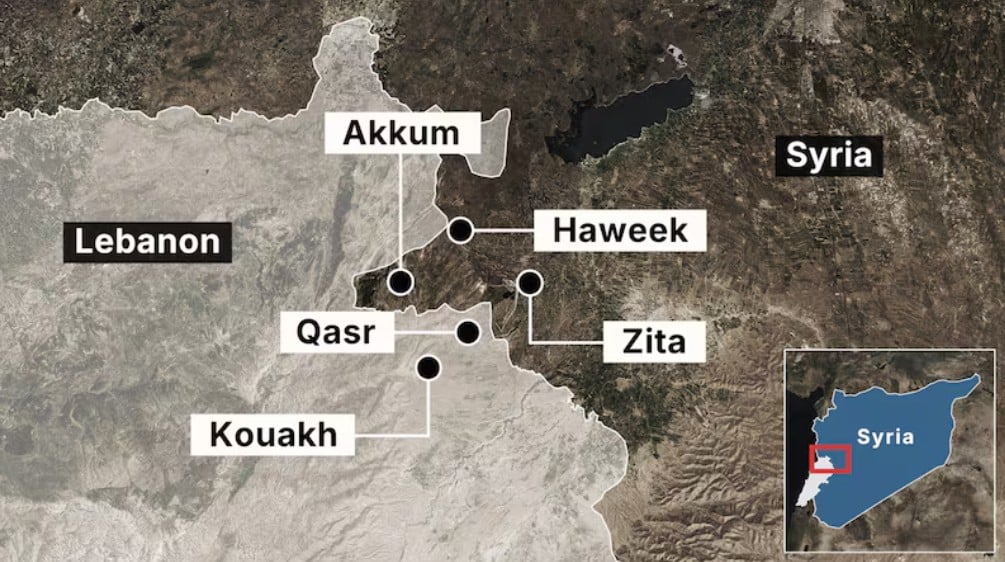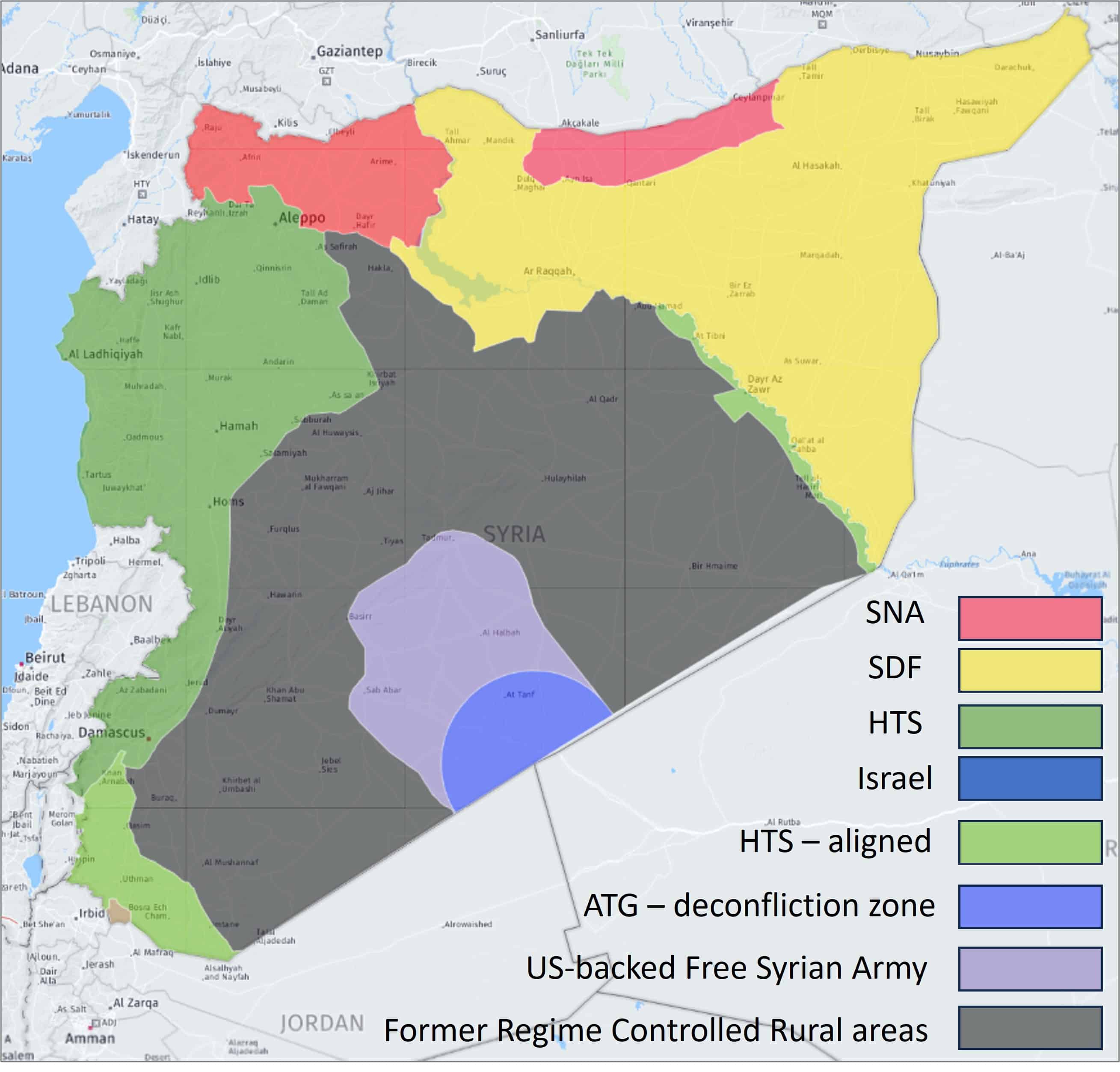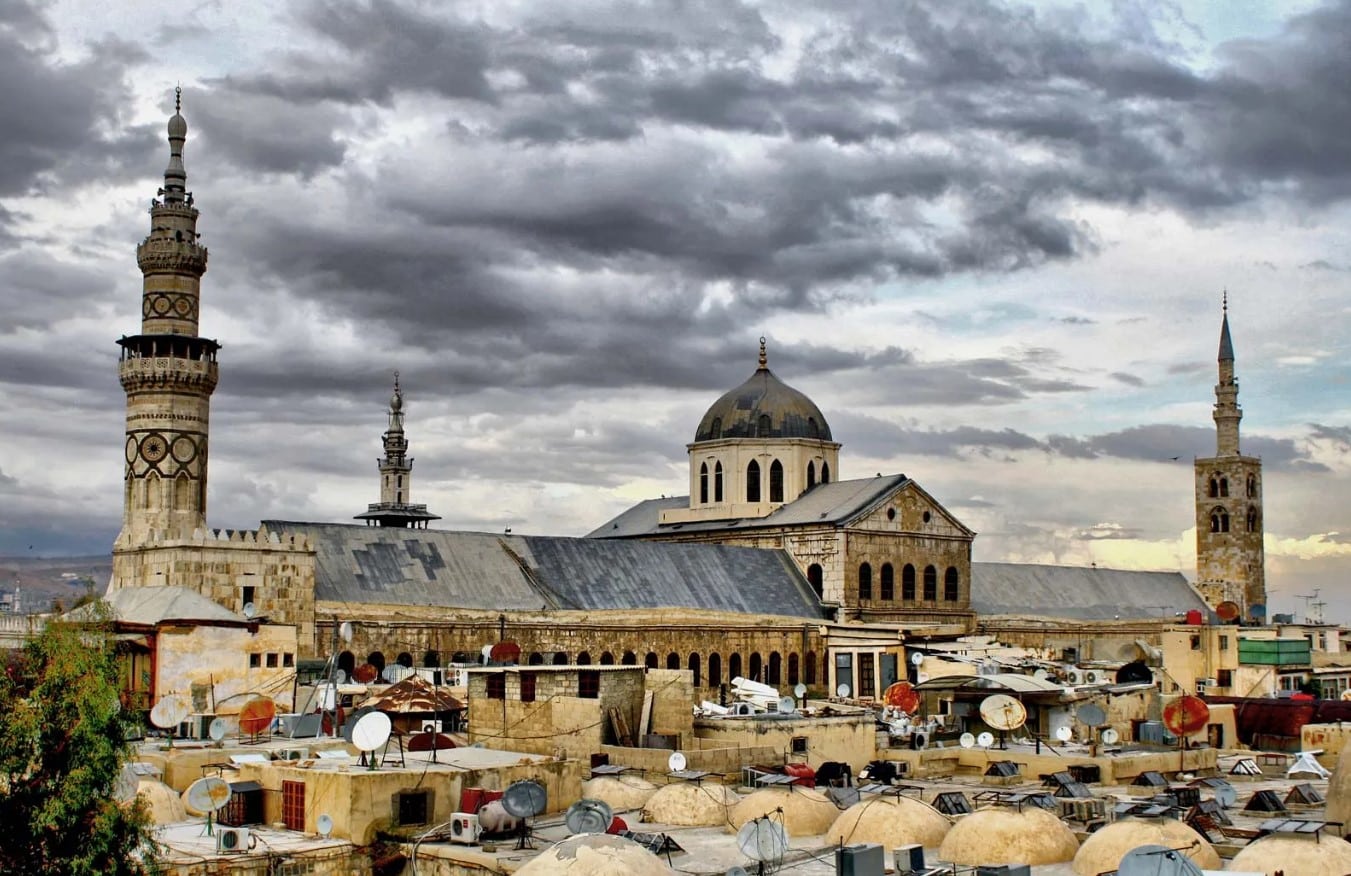Weekly Incident Map
Dear subscriber. Welcome to the Syria Weekly Report – a brand-new reporting service launched by Talos that provides high-quality information and analysis on Syria. The report is focused on broader strategic and political developments in the country, as well as Syria’s relations to regional stakeholders and surrounding countries. The report is disseminated every Tuesday and is complemented by a daily report.
The service will be provided for our existing subscribers for free for a limited time period and then offered as a separate, stand-alone product outside your regular subscription. For inquiries regarding prices for a subscription, or the availability of bespoke reporting on Syria – including in-depth reports, risk assessments and incident data – please email [email protected]. Please also contact us if you are interested in transportation or other security services in Syria. In the meantime, please enjoy this complimentary service.
Executive Summary
-
President Macron invites President Sharaa to France
-
Syria-Turkey ties set to strengthen following al-Sharaa visit
-
Speculation of US troop withdrawal fueled by DoD plans
-
Four killed in clashes near Lebanon-Syria border
-
Israeli airstrikes continue in the south and west
President Macron invites President Sharaa to France
EU stakeholders continued this week to engage with the Syrian Government led by Interim President Ahmed al-Sharaa. On 5 February, President Emmanuel Macron became the first EU leader to speak directly with the interim president, and in a phone call, the French president invited al-Sharaa to come to France. According to the official readout provided by the Syrian presidency, the president also congratulated al-Sharaa on assuming the presidency position and expressed his “complete support for the transitional phase in Syria.” The statement also noted France’s efforts to lift sanctions on Syria and “pave the way for growth and recovery.”
The phone call was notably not commented on by President Macron’s office and the remarks by Macron, especially with regard to the lifting of sanctions, were only quoted by the Syrian side. The comments do however stand out as a declaration of French support for the new government that supersedes that of other member states, and the EU as a whole, which has so far stopped short of proceeding with sanctions relief. In late January, the EU agreed to a roadmap to lift sanctions on key sectors and industries, but EU officials – including the High Representative Kaja Kallas – have since cautioned that the subject is conditioned on the new government demonstration progress on the political transition and its commitment to an inclusive government that respects the rights of minorities and women. Last week, Kallas appeared to temper expectations for sanctions relief by stating that the issue is “not currently a priority” while other officials noted the need to resolve several technical issues.
In a related development however, the EU this week confirmed that Kallas extended an invitation to Foreign Minister Assad al-Shaibani to visit Brussels. Spokesperson for foreign affairs Anwar al-Anouni said in a press conference that the invitation was made during the regional summit in Riyadh in January as “European foreign ministers continue discussions on Syria’s political future and the evolving dynamics in Damascus.” No date for the visit was specified but the trip would represent the first formal high-level engagement between the EU and the Syrian government in more than a decade.
Syria-Turkey ties set to strengthen following al-Sharaa visit
Other political developments this week were dominated by President al-Sharaa’s much-anticipated visit to Turkey. The president – who was symbolically invited by his counterpart Recep Tayyip Erdogan on his private jet alongside his wife and Foreign Minister al-Shaibani – arrived in Ankara on 4 February, shortly after his visit to Saudi Arabia and the two trips highlight the critical roles played by Turkey and Saudi Arabia in supporting the new government in Damascus. Following a three-hour meeting, President Erdogan and al-Sharaa conducted a joint press conference where they both emphasized the need to strengthen bilateral ties, while al-Sharaa praised and thanked Turkey for its support during the political transition. He also emphasized the importance of “transforming” current bilateral relations into a comprehensive “strategic partnership” and said both sides are working closely to confront security threats in the region.
For his part, Erdogan reaffirmed Turkey’s commitment to supporting the people of Syria and their right to shape the future of their country. Erdogan also announced that the coming period would involve increased diplomatic engagements, including high-level meetings, to elevate relations to a strategic level. More importantly, Erdogan criticized Western sanctions on the government and described them as a major obstacle to reconstruction, recovery and development, while reiterating Turkey’s readiness to assist in efforts to rebuild the country.

President al-Sharaa and President Erdogan in Ankara
The official readouts and subsequent press conference were largely devoid of more significant details and mainly characterized by expected diplomatic platitudes and generic remarks. Regardless, the meeting is a significant step in terms of highlighting the closer relations between the two sides which, until the collapse of the Assad government, was characterized by suspicion and limited direct engagements. It should be noted that the HTS remains on Turkey’s list of designated terrorist organizations and while the Turkish-backed Syrian National Army formed part of the coalition to overthrow Assad, Turkey did not provide direct support for the HTS. The question of the Turkish-backed SNA’s integration under the HTS-led Defense Ministry also remains unclear as the group – which is numerically superior to the HTS – continues to operate outside the HTS-led command structure.
Separate, and arguably more significant, reporting stated however that the two leaders discussed a potential military partnership agreement that would elevate military cooperation. A Turkish Ministry of Defence official informed members of the press in Ankara that a “roadmap” for the agreement is being drafted, without providing further details. Separate sources stated that the deal would involve the establishment of Turkish air bases in central Syria and training of the new Syrian army as well as utilizing Syrian airspace for military purposes. The potential locations for the air bases reportedly include Palmyra military airport and the Syrian army’s T4 base, both in Homs province. This was notably not mentioned by Erdogan or al-Sharaa during the press conference, but would set conditions for a significant expansion of Turkey’s political influence and military projection capabilities in Syria should it materialize.
Speculation of US troop withdrawal fueled by DoD plans
Speculation over the future of US troops in Syria – and the new Trump administration’s policy towards the new HTS-led government – were fueled this week by reports that the US Department of Defense (DoD) is drafting plans for a full troop withdrawal. On 4 February, the US media channel CBS News published a report detailing plans by the Pentagon to withdraw all troops from Syria within 30, 60, and 90 days. The report, citing unnamed US officials close to the Department of Defense, linked the withdrawal plans to recent comments by President Trump, and other reports, indicating that the new US administration would not keep troops in the country. As discussed in the previous weekly report, Israeli sources stated in late January that the Trump administration informed Tel Aviv regarding the withdrawal plans but when asked about the issue, President Trump dismissed the reports yet also claimed Syria is “its own mess” and that “they don’t need us involved.” The president also said a decision on Syria will be made, but without specifying a timeline.
The subsequent report regarding the withdrawal plans has understandably sparked speculation of an impending move to withdraw the troops however this assessment remains premature at this stage. Later in the week, Secretary of Defence Pete Hegseth declined to confirm the reports but added that military planning is a routine practice within the Department of Defense and that strategic decisions rest with the President, not the Pentagon.
Regardless, the related speculation is set to fuel concerns amongst allies in the region, including Israel and the SDF, about the decision and its implications. A spokesperson for the latter said during the week that the organization has not received any notifications regarding a possible withdrawal but warned that a decision to withdraw would play into the hands of IS “and other malicious actors.” As many observers have pointed out, US support remains necessary not only from a counter-terrorism standpoint in terms of keeping pressure on IS, but also to sustain camps hosting former IS elements in the northeast. With the SDF involved in frontline clashes with the Turkish-backed Syrian National Army in eastern Aleppo, and managing a tribal-led insurgency in Deir Ez Zour, the withdrawal plans are certainly set to amplify concerns over IS efforts to exploit potential security gaps and reinitiate assaults to liberate members hosted in the camps.
Four killed in clashes near Lebanon-Syria border
Strategic developments this week were also shaped by the outbreak of clashes between HTS-controlled security forces and Lebanese tribal forces, including Hezbollah-affiliated elements, in western Homs province. The hostilities started when the Syrian Security Forces, predominantly comprising HTS elements, launched a security operation on 6 February in the town of Hawik– a border town located in the Qusayr district and primarily inhabited by members of the Zoaiter and Jaafar clans. The town has for years been used by Hezbollah for smuggling activities between Lebanon and Syria, and the operation was launched as part of a major effort by the new government to tackle smuggling activities involving elements of the former government and Iran-backed factions. State-affiliated channels claimed several clan members were detained and a large amount of equipment seized.
The clashes continued the following day when the HTS moved to seize control over several villages in the district, including Hawik, Akuam and Garmash. At least three Lebanese tribal members were killed while the HTS confirmed the death of one of its members. In response, the Lebanese government dispatched forces to the area while Lebanese President Joseph Aoun and interim president Ahmed al-Sharaa discussed the situation on the phone in a bid to reduce tensions. Despite this, reports of cross-border artillery exchanges and gunfire continued on 8 February, as local tribal elements and residents called on the Lebanese government to intervene on their behalf, and “protect” Lebanese citizens in the area.

Area impacted by Syria-Lebanon clashes
President Auon also issued orders granting the Lebanese Army the right to respond to any cross-border fire originating from Syria, while local reports described the mobilization of additional reinforcements on both sides of the border. As of 11 February, the situation has calmed down and no further hostilities were reported on 10 February amidst assessed efforts by both governments to avoid further escalation. A prisoner exchange was also reported over the weekend involving recent detainees, with the HTS reportedly agreeing to release 16 women and children in exchange for two members of the security forces.
Regardless, the outbreak of tensions this week forms a concerning indicator that will likely reappear as a source of instability along the border region. Since assuming power, the HTS-led government has prioritized efforts to crack down on smuggling activities along the border in the west, primarily with the intent to neutralize networks affiliated with the former regime but also to deny Iran-backed groups and Hezbollah-affiliated elements what remains an important source of income. This, however, is set to raise tensions between the new government and Hezbollah as well as the Lebanese government, which has already reacted negatively to measures implemented by the new government. This includes most notably restrictions on the entry of Lebanese citizens and allegations, made by Beirut, that residents near the border are being mistreated by the new government. In late January, clashes were also reported on the Lebanese side of the border between suspected narcotics smugglers involved in the trade and transportation of Captagon – a narcotic that has become increasingly popular in the region and that formed a key source of revenue under the former regime.
Israeli airstrikes continue in the south and west
The Lebanon-Syria tensions are further added a layer of complexity by the involvement of Israel, and continuous efforts by Tel Aviv to reduce Syria’s conventional military capabilities and to eliminate and prevent the establishment of Hamas and Iran-backed groups in the country. Further to the clashes above, the Israeli military announced that it targeted a tunnel system utilized by Hezbollah near the Lebanese border on 9 February. On the same day, multiple sources reportedly Israeli airstrikes in other areas of southern Lebanon as well as the Daraa countryside in southern Syria, targeting weapons storage facilities and a military airport in the province. The day before, another operation targeted a storage facility south of Damascus city that the IDF claimed was being utilized by Hamas. No casualties were discussed, but a large explosion was reported in the area, with significant material damage assessed.
Similar operations are expected to continue over the short to medium term, as Tel Aviv retains intent to limit any remnant regime capabilities and to ensure that the new Syrian government remains militarily inferior so as to reduce the threat posed to Israeli interests. The strikes this week also showcase Israel’s willingness to continue striking Iran-backed assets in the country, with the targeting of smuggling networks and facilities aimed to deny the possibility of Syria re-emerging as a corridor to supply Hezbollah. This underscores the importance of monitoring the situation closely while avoiding sites and locations affiliated with the former regime.
More importantly, the airstrikes in southern Lebanon do pose a threat to the existing ceasefire agreement between Hezbollah and Israel from November and may understandably provoke a resumption of hostilities between the two sides that could have a spillover effect on Syria. According to media reports, at least six people were killed as a result of the airstrikes over the weekend, which the IDF claimed targeted Hezbollah “operatives” within a weapons storage site in southern Lebanon. The statement added that the activities “within the site are considered a blatant violation of the understandings between Israel and Lebanon.” In an assessed show of force, Israeli aircraft were also reported flying at low altitudes over Beirut shortly after the airstrikes.
The associated dynamics remain important to monitor as the ceasefire remains fragile and as both sides continue to accuse each other of violating the terms of the deal. According to Hezbollah and affiliated media channels, Israel has conducted more than 870 ceasefire violations since the agreement on 27 November. For their part, Israel accuses Hezbollah of continuing smuggling and other activities that violate the terms. Notably, Israel has yet to withdraw from southern Lebanon in accordance with the agreement which stipulated that all forces should be withdrawn by 26 January. The deadline has been extended until 18 February, but Israel has stated that it will not comply unless Hezbollah also commits to respecting the terms of the deal. The expiration of the deadline on 18 February forms a potential risk escalation indicator that may trigger another escalation in hostilities.
Control of Terrain Map – February 2025



